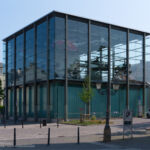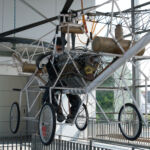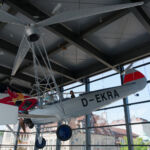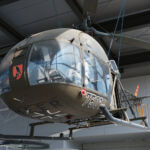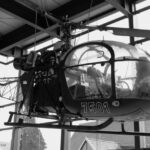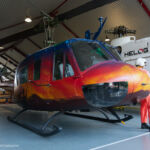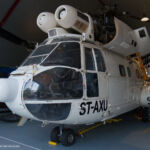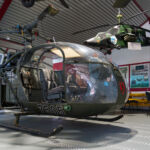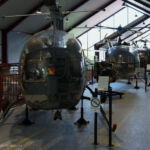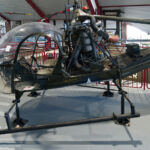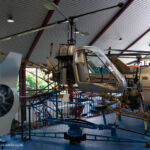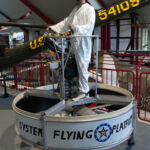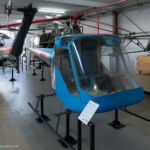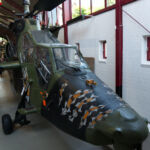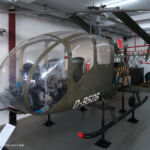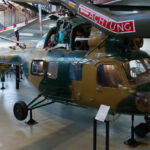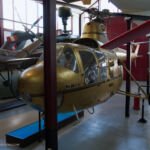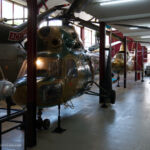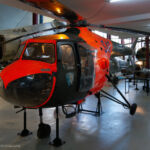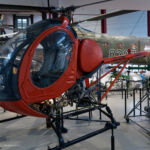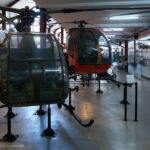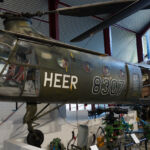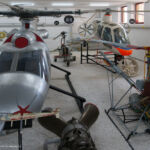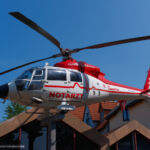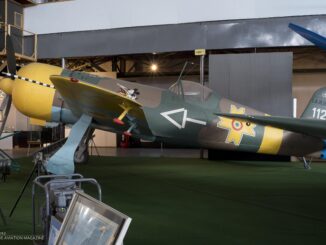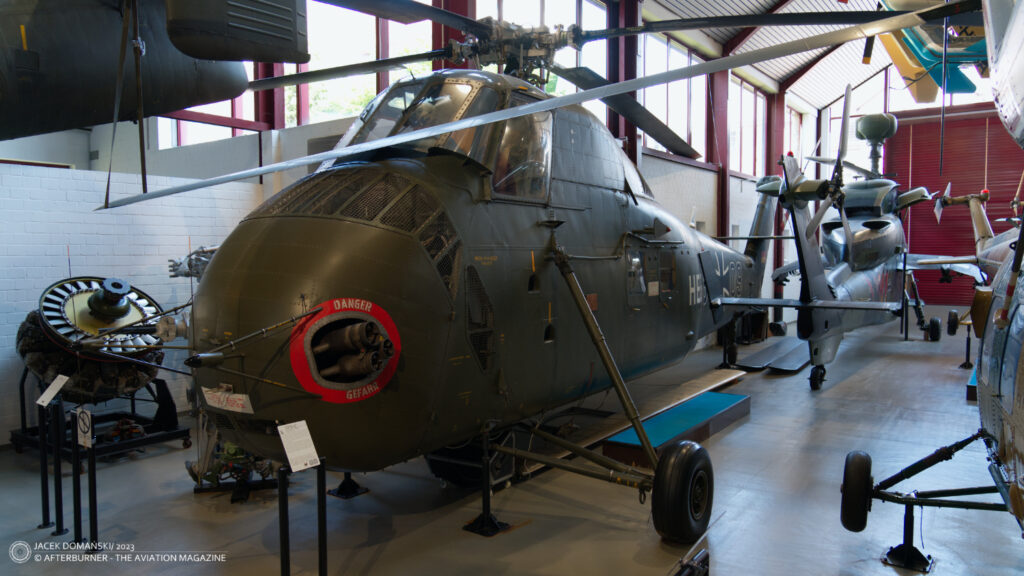 At the foothills of the Weser Uplands, in German land of Lower Saxony, there is a small but picturesque town named Bückeburg. Apart from the interesting Bückeburg Palace, the former residence of the Princes of Schaumburg-Lippe, a 17th century church and a town hall, the city is a home to one of the most interesting aviation museums in Central Europe – Hubschraubermuseum Bückeburg (Bückeburg Helicopter Museum).
At the foothills of the Weser Uplands, in German land of Lower Saxony, there is a small but picturesque town named Bückeburg. Apart from the interesting Bückeburg Palace, the former residence of the Princes of Schaumburg-Lippe, a 17th century church and a town hall, the city is a home to one of the most interesting aviation museums in Central Europe – Hubschraubermuseum Bückeburg (Bückeburg Helicopter Museum).
History and location of the museum is inextricably linked with the German Army Aviation. In 1960, Bückeburg became a home for Heeresfliegerwaffenschule (English: German School of Army Aviation) that in 2015 was turned into Hubschrauberausbildungszentrum (English: International Helicopter Training Center). Initially, that helicopter centre for the re-established German armed forces was created in Mending, but then moved to Achum airfield, the former RAF Station located in the northeast part of Bückeburg.
In 1955, when the Bundeswehr was founded, it was also decided that every branch of the new German armed forces should have a dedicated helicopter unit. As a result, a group of German military personnel was sent to the United States to be trained as helicopter pilots there. Among them there was Werner Noltemeyer, the future founder of the museum.
During his training at Fort Rucker (currently known as Fort Novosel) in Alabama, Noltemeyer was fascinated by a collection of military equipment, including rotorcraft, located at the base. Moreover, he was there shortly after the abovementioned assemblage was, on 17th April 1956, officially turned into the Army Aviation Museum – which today is proud to have the biggest collection of helicopters in the world.
After his return to Bückeburg, Noltemeyer started with creating his own collection of various items related to rotorcraft and their development. His efforts were noticed during the first Helicopter Forum held in Bückeburg in 1961. Shortly after, Noltemeyer received several new exhibits and his small collection was expanded into a regular museum. However, it was located within the air base, therefore was available only for military personnel and some official guests.
Opening the collection for general public meant great opportunity to attract more tourists to the city. Therefore, after some negotiations between the municipality and military authorities, a building located in the city centre – and commonly known as Burgmannshof – was assigned to house the Noltemeyer´s helicopter museum there.

It certainly had to be a hard task to turn an old timber-framed building, with its roots dated back to the 15th century, into an aviation museum. However, on 9th June 1971, Bückeburg Helicopter Museum was officially opened to the public during a solemn ceremony led by Heinrich Focke – German aviation pioneer, co-founder of the Focke-Wulf company and creator of the first German helicopter.
Over the next years, the collection of helicopters in Bückeburg was constantly growing. Regrettably, many of them were exhibited in the open air for years and that left a mark on their condition. Therefore, in 1978, construction of the first extension began. The new museum building was officially opened in May of 1980.
In 2011, following the renewed concept of the collection – as well as its adaptation to modern, digital world – another extension was added to the museum. The cubic glass building, so-called ´Voliere´, allowed to redesign the exhibition and to offer new, comfortable facilities for its visitors.
Since its very beginning, Hubschraubermuseum Bückeburg is managed and operated by Hubschrauberzentrum e. V. Bückeburg (English: Helicopter Centre Bückeburg), a registered voluntary association. Since 1962, the association holds International Helicopter Forum in Bückeburg, an event focused on exchange professional experiences and knowledge from the rotorcraft world and related technology. Initially, the forum was organized annually but currently the event is being held every two years, with next edition planned for 26th and 27th June 2024.
Nowadays, the museum offers approximately 2,600 sqm of exhibition space, that accommodate a collection of about fifty rotorcraft, exposition of helicopter models, flight simulator and archival library.
First, visitors to the museum usually direct their steps to the ´Voliere´, where they can start their journey into fascinating world of rotorcraft. A replica of the Cornu helicopter (aka Cornu No. II) is the focal point of the exhibition there, allowing the guests to get familiar with the aircraft credited with the first successful flight of a rotorcraft. The original Cornu No. II was built by Paul Cornu, a French engineer and bicycle manufacturer. On 13th November 1907, the rotorcraft performed its first flight, ascending tens of centimetres above the ground and staying in the air for approximately twenty seconds.
Among other exhibits located in the ´Voliere´ there are: MBB Bo 105 CB-4, full-scale replica of Focke-Wulf Fw 61, Aérospatiale/Sud Aviation SE-3130 Alouette II and German-made gyrocopters Cloud Dancer I and II.

The Bo 105 was originally used by the German police forces, then operated by a few private owners and finally became part of the Flying Bulls fleet. That helicopter is exhibited in a manner to resemble its exceptional aerobatic abilities and carries the Flying Bulls livery.
The Fw 61 is often considered the first functional helicopter in the world. The rotorcraft, designed and developed by Heinrich Focke, performed its maiden flight on 26th June 1936. Shortly after, the Fw 61 set several aviation records in altitude, speed and flight duration categories.
Exploring the intriguing world of rotorcraft continues with entering the main exhibition. At first, history of rotorcraft is presented, starting from the initial ideas, such as ´aerial screw´ designed by Leonardo da Vinci. That project, usually considered the first concept of rotorcraft in history, is visualized as scale model, as well as several other early developments and ideas from all over the world, related to vertical flight.
Visitors to the museum can also learn about rotorcraft pioneers, whose biographies are presented there, together with scale models of their major designs.
The helicopter collection includes a variety of types used between the 1950s and 1970s, such as Bristol 171 Sycamore, Sikorsky S-58/H-34G, Kaman HH-43F Huskie, Hiller H 23C, Bell OH-13H Sioux, Aérospatiale Alouette II and Alouette III, Saunders-Roe Skeeter, Aérospatiale SA330J Puma, Merckle SM 67, Hughes TH-55A Osage and Sud-Ouest SO-1221S Djinn. There are also some rotorcraft from the other side of the Iron Curtain there: WSK SM-1, Mil Mi-2 and Kamov Ka-26.
The museum in Bückeburg can be also proud of its collection of German-made helicopters from Bölkow and Messerschmitt-Bölkow-Blohm (MBB) companies. Apart from the already mentioned Bo 105 exhibited in the ´Voliere´, the collection includes: Bo 105 P-1A1, the famous Panzerabwehrhubschrauber – anti-tank helicopter of the German Army Aviation Corps; Bo 108 VT2, the second prototype of the helicopter that later became Eurocopter EC 135; Bo P166/3 ´Flying Jeep´; Bo 46 and Bo 103; Bo 102 helicopter trainer, as well as MBB/Kawasaki BK 117.
Oneof the museum, so-called ´the Garage´, presents a broad range of home-designed and concept gyrocopters, gyrodynes and other rotorcraft. The visitors can find there Derschmidt Tragschrauber, backpack-type autogyro; Saalbach 1 Tragschrauber built in the Eastern Germany; VFW H-3 Sprinter experimental rotorcraft; amateur helicopters built by Georges de Vastey; Wagner Rotocar III and many others.
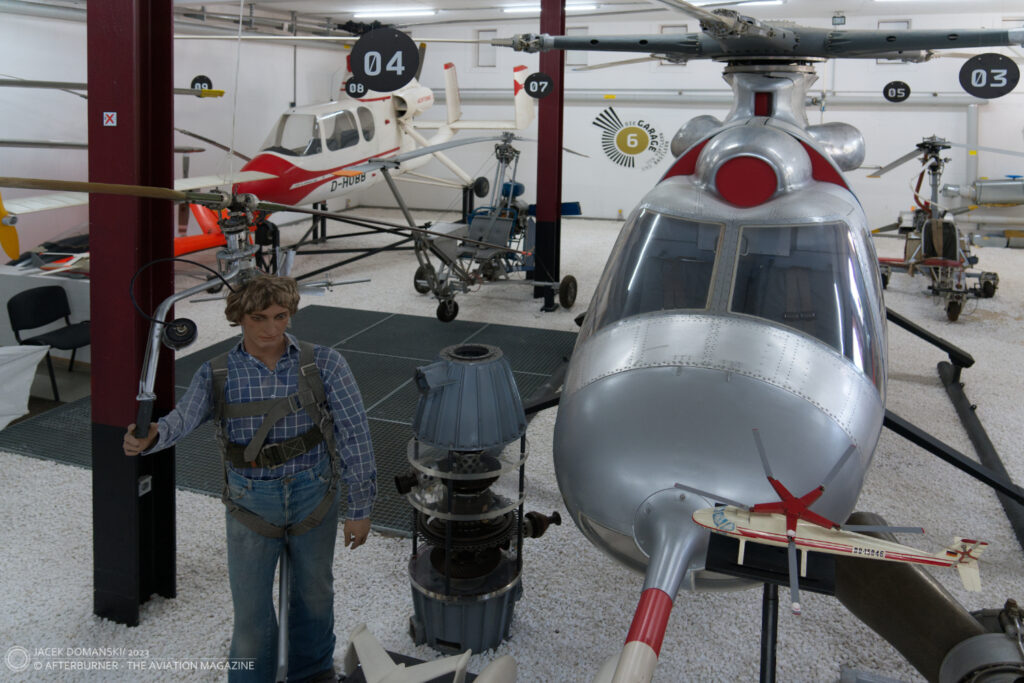
Last but not least, some highlights of the Bückeburg rotorcraft collection should be mentioned. Focke-Achgelis Fa 330 is definitely one of them – a rotor kite developed during the World War II and used with German U-boats to increase their observation range. Then, there is a replica of Nagler-Rolz NR 54, an Austrian experimental helicopter from the early 1940s.
Piasecki H-21C Shawnee is another helicopter that attracts attention of the museum visitors. The famous ´flying banana´ was operated by the German armed forces between 1957 and 1972, used for observation, liaison and training duties. The example exhibited in Bückeburg is ´83+07´ aircraft of the German Army Aviation Corps.
Next to the H-21C, the visitors can find an Eurocopter EC-665 Tiger. The rotorcraft exhibited in the museum is the third prototype (PT3) of that attack helicopter created as a result of multinational cooperation. Apart from being used for evaluation tests, the PT3 also appeared in ´Golden Eye´ movie from the James Bond series.
It is impossible not to mention here Siemetzki ASRO 4, an amateur-built helicopter from the early 1960s developed by Alfons Siemetzki from Kirchdorf am Iller. Siemetzki´s idea was to create an affordable rotorcraft, therefore his helicopter is made of serial manufactured mechanical parts, easily available on the market. Regrettably, none of Siemetzki´s developments went beyond prototype stage and became just another home-made aviation curiosity.
One of the latest additions to the collection in Bückeburg is Bell UH-1D Iroquois. That example of popular multipurpose helicopter was the last one to retire from the German Army Aviation and is wearing a special ´Goodbye Huey´ livery. The rotorcraft found its place among the museum exhibits in July of 2021.
It should be also mentioned here that main display area includes also several exhibits related to rotorcraft development and history of helicopter industry, such as construction elements and powerplants that allow the visitors to learn about the way how rotorcraft works.
The final part of the exhibition at the Bückeburg Helicopter Museum is focused on the latest developments in the rotorcraft world – unmanned aerial vehicles and their application in today´s world. A full-scale replica of Ingenuity, the Mars Helicopter is a final touch, closing the journey through the history of rotorcraft development.
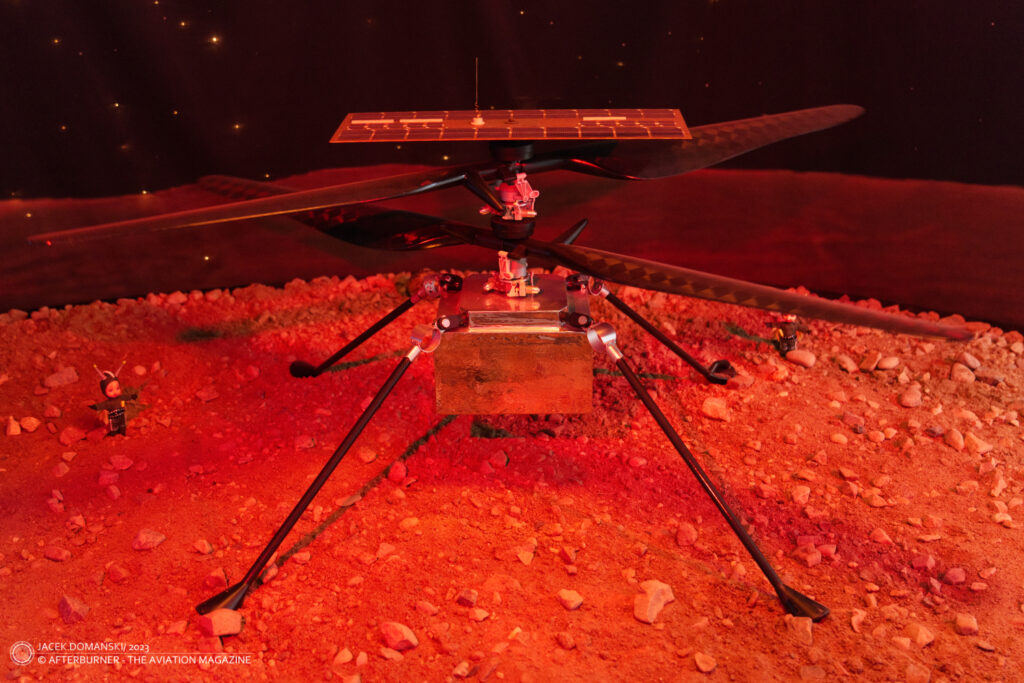
Last but not least, two open-air exhibits should be mentioned. The first one is Eurocopter SA 365 Dauphin, a helicopter mounted on poles near the main museum building and displayed with livery of German air ambulance service. Then, next to B83 expressway that runs near Bückeburg, a pole with another Bo 105 was erected, aimed to attract people passing by and direct them to the museum.
In conclusion, the Bückeburg Helicopter Museum is definitely the place worth visiting. Not only because its one of just a few aviation museums in the world focused on rotorcraft and the biggest of that kind in Europe, but also because of its fantastic collection and the way all those exhibits are displayed there.
With no doubts, one of the advantages of the museum is that almost entire collection is housed under the roof and therefore protected from impact of weather conditions. All exhibits are in great condition and well-described, with possibility to learn even more information through an interactive audio guide.
It seems that the only missing thing is even more space for exhibition. More spacious halls would create possibility to show that amazing rotorcraft collection in an even better way. On the other hand, extending the museum that is located in the middle of the town can be more than challenging and, most probably, would be related with moving the collection to a new place, outside the city limits.
The Bückeburg Helicopter Museum is opened daily from 10:00 to 17:00 hours. Entrance fee is 9.50 EUR for adults, 4.50 EUR for children aged 6 through 16. The exhibition is wheelchair-accessible and there is also a souvenir shop there. Parking spaces are located directly next to the museum building and at neighbouring streets, there is a parking fee from Monday morning to 13:00 hours on Friday.
More images from Bückeburg Helicopter Museum:
